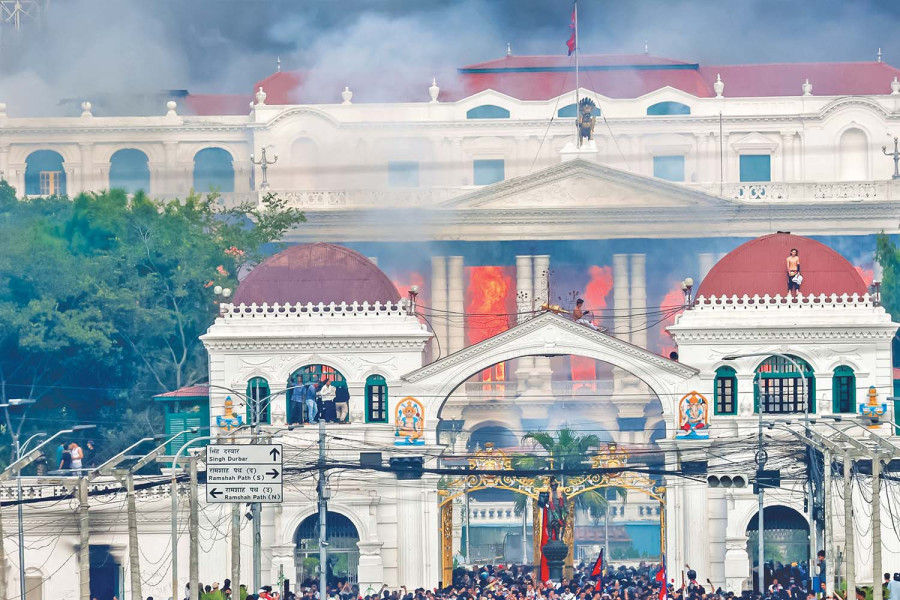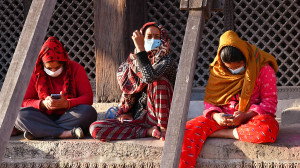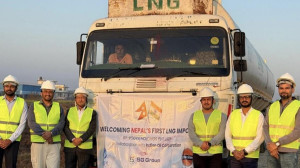Money
Nepal may see negative growth after unrest, World Bank warns
Projects growth of 2.1% this fiscal, with possible contraction of up to 2.6% if instability stays.
Sangam Prasain
The 24-hour unrest in early September—described as the worst in years and led largely by people aged 13 to 28, the Generation Z—is expected to crimp the country’s economic growth to 2.1 percent in the current fiscal year, with a possible negative growth between 1.5 and 2.6 percent, the World Bank said on Tuesday.
In April, the World Bank had projected Nepal’s economy to grow by an average of 5.4 percent in the current fiscal year.
The report, however, does not factor in the additional losses caused by the torrential rainfall of October 3–4, which inflicted severe damage on lives, infrastructure, and agriculture.
In its South Asia Development Update: Jobs, AI, and Trade, the World Bank said that the September 8–9 unrest—which left 75 people dead and widespread destruction—has deepened political and economic uncertainty in Nepal.
It expects international tourist arrivals to drop sharply, the insurance sector to face mounting asset losses, and weakened investor confidence to slow private investment and non-hydropower construction.
“Nepal has suffered back-to-back disasters—first the violent protests and then heavy rainfall. Both have dealt a massive blow to the economy,” said economist Jagadish Chandra Pokhrel.
He warned that the most significant impact will be on investment. “The damage to private and public property, especially business houses and chain hotels, sends a negative message that Nepal cannot secure investors’ assets.”
Pokhrel said the attacks on businesses were particularly unfortunate for a country like Nepal, which aims to graduate from Least Developed Country (LDC) status to a developing nation by November 2026. This upgrade will call for heavy private sector investment to carry the momentum forward.
“The private sector creates jobs, yet its properties have been burnt and vandalised. This is the most damaging part. It may take years for Nepal to repair its tarnished image, even if the full effect is not felt immediately,” he said.
The Federation of Nepalese Chambers of Commerce and Industry (FNCCI), the umbrella organisation of the private sector, is still collecting nationwide data. Its preliminary estimates show losses of about Rs80 billion, with more than 15,000 jobs directly affected by the recent unrest.
FNCCI President Chandra Prasad Dhakal said that the new finance minister’s quick response to the private sector’s concerns has brought a glimmer of hope at a time when the economy is under severe strain. However, he cautioned that uncertainty still clouds the prospects of economic recovery.
Dhakal said that in every episode of protest or civil unrest, it is the private sector that bears the immediate brunt—factories close, supply chains are disrupted, and investors lose confidence.
“People still are not aware that the private sector creates jobs, pays taxes, and contributes directly to the nation’s development and prosperity,” he said.
He added that a lack of public understanding about the private sector’s role has often left entrepreneurs feeling alienated and without support.
This needs to change, Dhakal said, urging the government and the civil society to work together to build a positive image of businesses as a key development partner.
The FNCCI chief said that while the government’s engagement with the business community after the recent unrest was encouraging, policy stability and confidence-building measures are crucial for any meaningful recovery. He emphasised that investment and job creation cannot thrive in an environment of political unpredictability.
Dhakal said the upcoming election is a defining moment for the country’s future. “The election should be conducted on time; otherwise, more uncertainty may prevail, which may put the country into another crisis,” he warned.
According to him, ensuring the election takes place as scheduled is not only a political necessity but also an economic one, as the private sector’s foremost demand is stability through timely polls.
“The business community wants peace and predictability,” Dhakal said. “Only with a stable government and consistent policies can Nepal restore investor confidence and move toward sustainable growth.”
The World Bank’s report said the service sector—particularly tourism—will be among the hardest hit. A sharp decline in tourist arrivals is expected to affect food and accommodation services, retail trade, and transport, especially the airline industry.
According to Nepal Tourism Board data, tourist arrivals fell 18 percent in September compared to the same month last year.
Agriculture will also feel the strain. Delayed rainfall during the key monsoon months of June and July in major rice-producing regions is expected to dampen farm output.
Nepal witnessed its worst unrest in decades when a government-imposed social media ban triggered widespread protests against corruption. The demonstrations quickly spiralled into large-scale violence, resulting in heavy human and economic losses.
Damage assessments of public and private infrastructure are ongoing. Following the upheaval, an interim prime minister was appointed in September to hold elections in March 2026.
While reconstruction efforts are expected to support a modest recovery in the next fiscal year, analysts warn that the March election—coinciding with Nepal’s peak tourism season—could further weigh on the economy.
There are also growing concerns that if the election fails to take place as scheduled, the country could plunge into a deeper political and economic crisis.
The protests underscored deep frustrations with poor governance, rampant corruption, and growing discontent among youth over the lack of economic opportunities.
The report said this scarcity of opportunity stems from structural weaknesses that have long hindered private enterprise: a complicated and unpredictable business environment, widespread irregularities, high trade and transport costs, and inadequate infrastructure.
As a result, Nepal’s growth has lagged behind that of its South Asian peers, with the country averaging just 4.3 percent between fiscal years 2012 and 2024, with limited job creation.
The World Bank noted that youth unemployment reached nearly 22.7 percent in fiscal year 2022–23, among the highest in South Asia. With few prospects at home, labour migration has become a dominant livelihood strategy, and remittances—accounting for nearly one-quarter of GDP—continue to sustain household consumption.
Before the recent unrest and floods, Nepal’s economy had shown signs of recovery. Growth reached 4.6 percent in the fiscal year ending mid-July 2025, up from 3.7 percent a year earlier, supported by robust hydropower generation, a rebound in industrial output, and stronger agricultural activity.
The World Bank observed that many South Asian countries have experienced waves of social unrest in recent years. Public uprisings led to government collapses in Nepal in September, Bangladesh in August 2024, and Sri Lanka in July 2022.
“Popular uprisings can create opportunities for necessary economic and social reforms,” the report said. “In the short term, however, they often disrupt economic activity.”
Citing data from 24 emerging market and developing economies (EMDEs) between 2000 and 2022, the report found that where social unrest toppled governments, GDP fell by an average of 5 percent in the subsequent quarters. These downturns were often accompanied by rising inflation and financial instability. The impacts were especially severe after prolonged unrest, in more authoritarian regimes, or during violent uprisings compared to peaceful protests.
In South Asia, the report said, many governments’ ability to cushion such shocks through expansive fiscal policies is limited by high public debt levels. Instead, policymakers should prioritise job creation to absorb the region’s rapidly expanding labour force.
Between 2010 and 2024, South Asia’s working-age population grew by about 16 million annually, but the region created fewer than 10 million jobs a year.
The report also warned that ongoing global trade tensions and weak investment could slow global growth, with spillover effects on South Asia. High debt has made several South Asian economies vulnerable to rising interest rates and slower growth. As banks hold large amounts of sovereign debt, fiscal stress can quickly spread to the financial system.
The World Bank said that while artificial intelligence (AI) offers opportunities to boost productivity, it could also disrupt labour markets. Meanwhile, rising tariffs in major export markets may undermine efforts to strengthen manufacturing, and mounting geopolitical pressures could push up energy costs and threaten regional energy security.




 9.12°C Kathmandu
9.12°C Kathmandu













%20(1).jpg&w=300&height=200)
